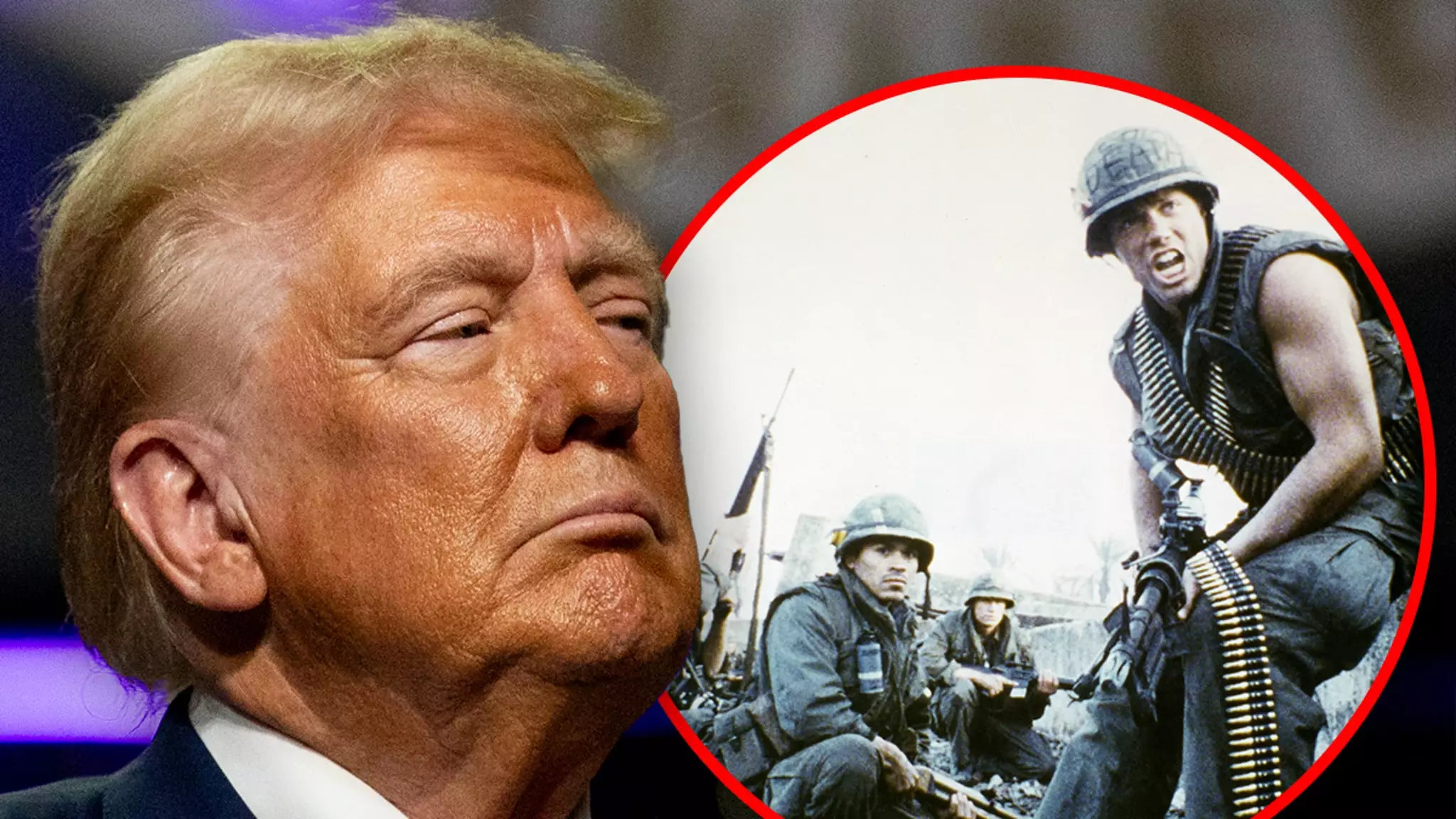At a recent rally in Coachella, California, Donald Trump reignited the debate surrounding military identity, invoking the iconic imagery of Stanley Kubrick’s “Full Metal Jacket.” By showcasing a video that pits his militaristic vision against what he derides as a “woke military” purportedly led by Vice President Kamala Harris, Trump attempts to paint a stark contrast in leadership styles and military culture. His rallying cry for a “Full Metal” military resonates with a faction of his base that longs for a return to traditional values, steeped in notions of toughness and masculinity.
Trump’s rhetoric implies a nostalgic longing for a military that embodies old-school masculinity, where the ideals of strength and perseverance overshadow inclusivity and diversity. The clips from “Full Metal Jacket,” particularly those showcasing the domineering Gunnery Sergeant Hartman, serve to underscore an adversarial approach to training and discipline. This portrayal, while undeniably compelling in its cinematic context, raises questions about the implications of such a mindset on contemporary military practices. The reality is that effective leadership often hinges on adaptability rather than on rigid adherence to past tropes of aggression and dominance.
Trump’s selective representation of military service members in drag and the inclusion of figures like Rachel Levine suggest an effort to alienate the increasingly diverse fabric of the armed forces. His rhetoric communicates a clear stance: in his vision, there is little room for individuals who embody identities outside of the conventional military archetype. However, this perception ignores the progression the military has made toward inclusivity since the repeal of “Don’t Ask, Don’t Tell” in 2010, a policy that allowed LGBTQ+ service members to serve openly. Trump’s framing emerges as a nostalgic retrogression that overlooks the significant contributions of these individuals to national security and the armed forces.
The Stakes of the Election: What Lies Ahead?
As Trump emphasizes his disdain for what he terms a “woke military,” it is worth considering the broader implications of his militaristic vision for the future. Should he return to a position of power, the changes he may advocate could affect not only service members’ rights but also the very principles of cooperation and unity that underpin the effectiveness of armed forces. The military’s shift towards embracing diversity—including gender identity and sexual orientation—reflects a contemporary understanding of team dynamics that values strength through unity, rather than divisiveness.
Trump’s recent rhetoric serves to galvanize a certain segment of his audience by appealing to antiquated and exclusionary notions of military identity. This discourse not only polarizes but also fundamentally overlooks the progress made in the realm of diversity and inclusion within the armed forces. While the future trajectory remains uncertain, it is vital for discourse on military identity to evolve beyond simplistic binaries of masculinity and femininity, embracing instead the complexity and capability that a diverse military force can offer. The coming election will undoubtedly serve as a referendum not just on leadership but on the kind of military culture America aspires to promote on the global stage.

Leave a Reply